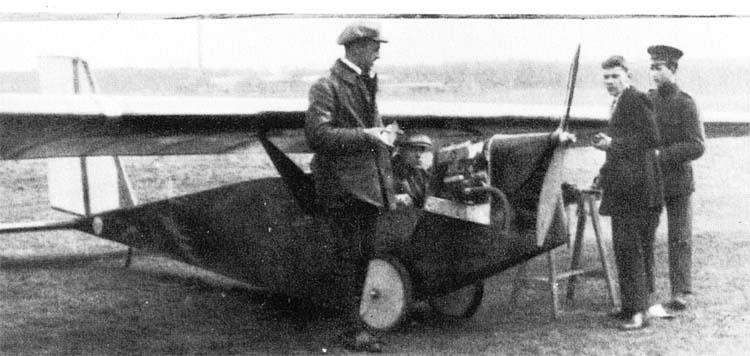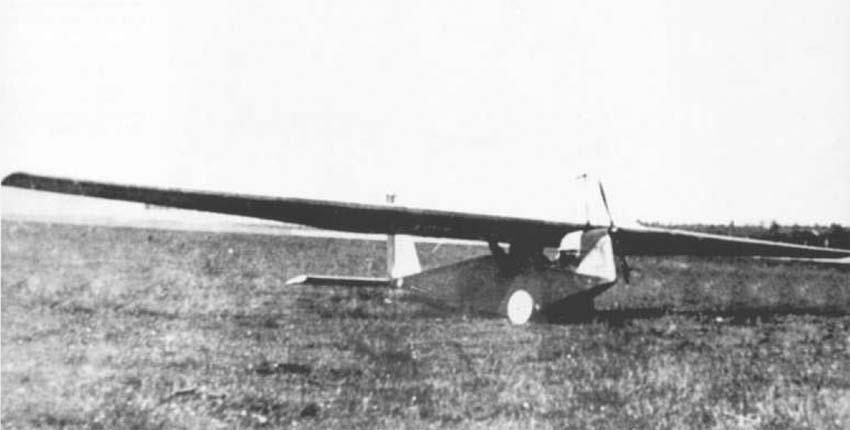| Type |
Single seat motorglider |
| Engine |
1 Victoria 10 hp |
| Dimensions |
Length 5,0 m , height 1,05 m , span 14,6 m , wing area 15,4 m2 , wing chord 1,36 m, aspect ratio 13,8, Gö 482 |
| Weights |
Empty 170 kg, loaded , max. take off weight 300 kg |
| Performance |
Max.. speed 105 km/h, cruising speed 90 km/h, range 400 km |
| Type |
Werk.Nr |
Registration |
History |
|
|
|
Participation in the 1924 Rhön competition in the "motorized gliders" category, which was introduced that year. |
Inspired by the success of the S.14 glider (which won an award in a factory competition), Willy Messerschmitt ("Willy" Wilhelm Emil Messerschmitt) decides to set up his own firm. Together with his brother Ferdinand, he organizes the company Flugzeugbau Messerschmitt, Bamberg. Work at the company began with the production of motor gliders ( Motorsegler ) S.15 and S.16 . The first was equipped with a 10 hp Victoria automobile engine. (7.36 kW.), the second (built in two versions - S.16a Bubi and S.16b Betty) was equipped with a Douglas engine22.6 hp (16.6 kW) .
If the glider S . 14 at the competition in Rennes at the end of the summer of 1923 was declared the winner and demonstrated the outstanding abilities of the young designer, then the fate of gliders with the S engine . 15,S . 16a and S .1 6b, commissioned by one of the flight schools, was not so brilliant.
The first high-speed taxiing S. 15 in the spring of 1924, when trying to raise the tail, it ended in an accident - the car rolled over on its back. The pilot was sent to the hospital, and the small plane was sent for repair and refinement. It turned out that on his first aircraft with a propeller, Willy did not take into account the effect of its blowing on increasing the efficiency of the stabilizer with the elevator.
Willy then quickly found the right solution and in a short time finalized and repaired the S.15. The new two-cylinder engine was already producing more than twenty hp. At the end of May, another pilot of the First World War, Captain Sivold, began flight tests of the modified motor glider. And complete success. A plane with a large overhead wing flew beautifully. At the same time, its fuselage in the parking lot was so pressed to the ground that the wing was at chest level of a standing person. A month later, he was praising his designer at an airfield near Bamberg in front of a large crowd of aviation enthusiasts. It flew to a height of 600 m and was in the air for 43 minutes. After a soft landing near the launch site, an enthusiastic crowd surrounded the pilot and designer: they asked questions, expressed admiration. After this flight, the customer agreed to accept the car. Three months ago, he ordered two others for participation in the upcoming gliding competitions in Rennes, where now motor gliders also competed.
The single-seat S.16a was much the same as the S.15, but Messerschmitt forever refused to control the roll of the wingtip deformation, as the Wright brothers did. Starting from S . 16a, he began to use the ailerons. Boxer engine cylinders with exhaust tips same as on S. 15, protruded beyond the side contours of the forward fuselage below the axis of rotation of the propeller. Double S. 16b had a larger wing span and increased area. The engine was more powerful. The front cockpit was occupied by the pilot. To build these machines, Willi rents part of the two-storey building of the Murrmann brewery in Bamberg and hires paid specialists for the first time. Both S .16 was assembled for the start of the annual gliding competition in Rene, but there was no time to fly around them.
Captain Sivold, who was now trusted by Messerschmitt to test, took off in a single-seat S. 16a immediately after the start of the competition. His powerful figure could hardly fit in a cramped cockpit. He had already gained a decent height - about 50 meters, when there was a crash and a howl of the engine. Then immediately there was dead silence, only a slight whistling of the air current. Then Sivold was horrified to find a gaping hole on top of the forward fuselage, where before that a propeller was spinning on its shaft. He broke away and flew away with the shaft. Now Sivold was flying on a " clean " glider. There was woods ahead, and he turned back toward the airfield. But the height quickly melted, and the field was still far away. The car crashed through the tops of the fir trees and got stuck between the two largest ones at a height of five meters.
When people ran up to the crash site, the pilot was nowhere to be found. Only in the evening he was found unharmed and completely drunk in a tavern in a neighboring village, where he celebrated his second birthday.
The flight of a two-seat S.16b with a passenger at a given range for Sivold also turned out to be unsuccessful due to the unreliable design of the propeller drive from the motor. On all three Messerschmitt motor gliders, the propeller shaft was located above the motor and rotated using a chain drive. Sivold was flying at a decent height when the chain broke. Ahead was a large field, and he planned on it. Together with a passenger, mechanic Schwartz, he put a spare chain, and Seivold took off again and flew along the route. But soon I had to sit down again - the engine sneezed. They fumbled for a long time until they found water in the carburetor. But taking off from such a small field was dangerous, and Seivold decided not to risk it. The car was removed from the competition. He then received only a consolation prize for flying with a passenger and the colorful cap of a 1924 competitor. And all the prizes in the class of motor gliders were given to Ernst Udet's Hummingbird.
Willie did not expect such a failure. After all, last year's competitions in Ren ended with his complete triumph with the S.14 glider - the main prize for flight altitude, second place and the prize for range, the special Albert Boehm prize, the honorary medal of the German Aviation Association. And this year, as soon as he got involved with these capricious and unpredictable engines, all the trouble began. But do not return again to the gliders. All over the world have long been flying on motors. And the future of aviation is only with motors. You will have to master this most difficult part of the aircraft - its heart. He pretty much excelled in aerodynamics and structural strength. Able to create well-flying, obedient to manage and light gliders.
Messerschmitt would never use the complex propeller chain drive again. It will mount the propeller directly on the motor shaft. And forever say goodbye to gliders and motor gliders.



